British Geological Survey
Type of resources
Available actions
Topics
Keywords
Contact for the resource
Provided by
Years
Formats
Representation types
Update frequencies
Service types
Scale
Resolution
-

This dataset contains data from a marine geophysical survey which took place on 1st October 2014 in the area of Ardmucknish Bay on board the RV White Ribbon. The survey was carried out by the British Geological Survey (BGS). This was a follow up survey to the previous work carried out in this area (Surveys: 2011/4 and 2012/5, 2012/7) to monitor changes in the geometry of gas charged sediments. QICS (Quantifying and monitoring potential ecosystem impacts of geological carbon storage) was a scientific research project funded by NERC; its purpose was to improve the understanding of the sensitivities of the UK marine environment to a potential leak from a carbon capture storage (CCS) system. Sub bottom seismic profiling data were collected using an Applied Acoustics surface tow boomer (STB). Webpage www.bgs.ac.uk/QICS/.
-
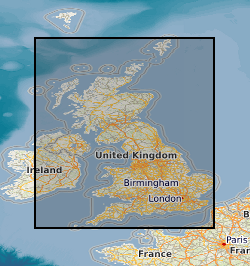
In 2011 the British Geological Survey (BGS) decided to begin the assembly of a National Geological Model (NGM) from its existing and on-going geological framework models , comprising integrated national crustal, bedrock and Quaternary models. The bedrock component is the most advanced of these themes and comprises both the calculated models and a complementary network of cross-sections that provide a fence diagram for the bedrock geology of Great Britain. This fence diagram, the GB3D_v2012 dataset is available in a variety of formats from the BGS website www.bgs.ac.uk as free downloads. It complements the existing 1:625 000 scale mapsheets published by BGS utilising the same colour schema and geological classification. The 121 component cross-sections extend to depths between 1.5 and 6 km; they have an aggregate length of over 20,000 km, and they are snapped together at their intersections to ensure total consistency. The sections are based on the existing BGS geological framework models where they cut through them, they also take account of the vast wealth of published data on the subsurface structure of Britain both from BGS and in the literature. Much of this is in the form of cross-sections, contour maps of surfaces, and thicknesses (isopachs). The fence diagram has been built in the Geological Surveying and Investigation in 3D (GSI3D) software. It is envisaged that this dataset will form a useful educational resource for geoscience students and the general public, and also provide the bedrock geology context and structure for regional and catchment scale studies. The fence diagram was built in 2009-12 using funding from the BGS National Capability Programme and the Environment Agency of England and Wales. 14 expert regional geologists compiled the sections.
-

Tellus Soils For rural soils, samples were collected at an interval of approximately one site per 2 km2 (about one site every 500 acres). Samples were collected from two depths (20 cm and 50 cm) at each site to provide an insight into vertical geochemical variations. The samples were analysed by XRF for Ag, Al2O3, As, Ba, Bi, Br, CaO, Cd, Ce, Cl, Co, Cr, Cs, Cu, Fe2O3, Ga, Ge, Hf, I, In, K2O, La, MgO, MnO, Mo, Na2O, Nb, Nd, Ni, P2O5, Pb, Rb, SO3, Sb, Sc, Se, SiO2, Sm, Sn, Sr, Ta, Te, Th, Tl, TiO2, U, V, W, Y, Yb, Zn, Zr. Au, Pt and Pd were analysed by 10g Fire Assay SO4 by Aqua Regia ICP-MS pH and Loss on Ignition were also recorded. The surveys followed the British Geological Survey's Geochemical Baseline Survey of the Environment (G-BASE) standard developed over many years that defines the specifications for mapping the regional geochemistry of the United Kingdom. For further information visit the Tellus webpages: http://www.bgs.ac.uk/gsni/tellus/
-
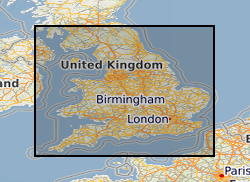
The Estimated Ambient Background Soil Chemistry England and Wales dataset indicates the estimated geometric mean topsoil Arsenic(As), Cadmium (Cd), Cr (Chromium), Nickel (Ni) and Lead (Pb) concentrations (mg kg-1). The soil chemistry data is based on GBASE (Geochemical Baseline Survey of the Environment) soil geochemical data where these are available. Elsewhere the stream sediment data are converted to surface soil equivalent potentially harmful element (PHE) concentrations. This dataset covers England and Wales but data is available for the whole of Great Britain, with the exception of the London area where an inadequate number of geochemical samples are available at the moment.
-
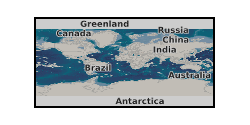
The data consists of a poster presented at 'The Fourth International Conference on Fault and Top Seals', Almeria, Spain, 20-24th September 2015. The abstract describes work carried-out on behalf of the 'Fault seal controls on CO2 storage capacity in aquifers' project funded by the UKCCS Research Centre, grant number UKCCSRC-C1-14. Shallow gas accumulations in the Netherlands sector of the Southern North Sea provide an opportunity to study their coincidence with faulting. Although difficult to attribute the occurrence of shallow gas to leakage of thermogenic fluids from depth (indeed shallow-sourced biogenic gas is common in the North Sea), evidence suggests a relationship, and the common attributes of the faults provide indications of the conditions under which faults in the region may leak, providing a useful indications of factors that should be avoided during CO2 storage operations.
-
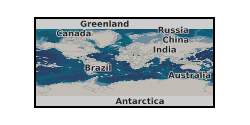
The data consists of a poster presented at the UKCCSRC biannual meeting in Cardiff, September 10-11th 2014. The poster describes work carried-out on behalf of the 'Fault seal controls on CO2 storage capacity in aquifers' project funded by the UKCCS Research Centre, grant number UKCCSRC-C1-14. Shallow gas accumulations in the Netherlands sector of the Southern North Sea provide an opportunity to study their coincidence with faulting. Although difficult to attribute the occurrence of shallow gas to leakage of thermogenic fluids from depth (indeed shallow-sourced biogenic gas is common in the North Sea), evidence suggests a relationship, and the common attributes of the faults provide indications of the conditions under which faults in the region may leak, providing a useful indications of factors that should be avoided during CO2 storage operations.
-
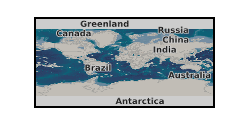
This presentation on the UKCCSRC Call 1 project, North Sea aquifer mapping, was presented at the Cranfield Biannual, 22.04.15. Grant number: UKCCSRC-C1-30.
-
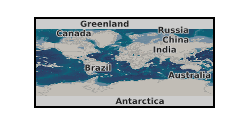
Pre-proposal for scientific drilling 'GlaciStore: Understanding Late Cenozoic glaciation and basin processes for the development of secure large-scale offshore CO2storage (North Sea)', submitted to Integrated Ocean Discovery Programme (IODP) March 2014. The proponent 'GlaciStore' consortium comprises research and industry organisations from the UK and Norway. The pre-proposal describes the scientific research objectives, 12 proposed drill sites to address the objectives, the relationship of the research with the IODP science plan, and describes and illustrates three scientific objectives. The objectives are to investigate the glacial history and sedimentary architecture, fluid flow and processes, and the stress history and geomechanical response in strata that have experienced multiple glacial and interglacial cycles cycles. A drilling and sampling strategy and the measurements expected to be taken are also described The lead submitter, on behalf to the GlaciStore consortium is Heather Stewart, British Geological Survey (BGS).The 27 proponents from the UK and Norway (BGS, Institute for Energy Technology, Lundin Norway AS, SINTEF Energy Research, Statoil ASA, University of Bergen, University of Edinburgh and University of Oslo) and their expertise are listed. The pre-proposal is a pdf format file. This is restricted to the proponents for publication and to progress to full proposal to IODP. UKCCSRC Grant UKCCSRC-C1-30.
-

Database of 3770 chemical analysis of limestone samples taken from across the UK. Analyses include CaO, SO3, Na2O,F, SiO2, MgO, Al2O3, K2O, SrO, P2O5, Cu, Pb, Zn, MnO, Fe. Location, sample type and host description are given. A limited number of samples, scattered across the UK.
-

This presentation on the UKCCSRC Call 1 project, North Sea aquifer mapping, was presented at the Cranfield BiannualIAP, 22.04.15. Grant number: UKCCSRC-C1-30.
 NERC Data Catalogue Service
NERC Data Catalogue Service